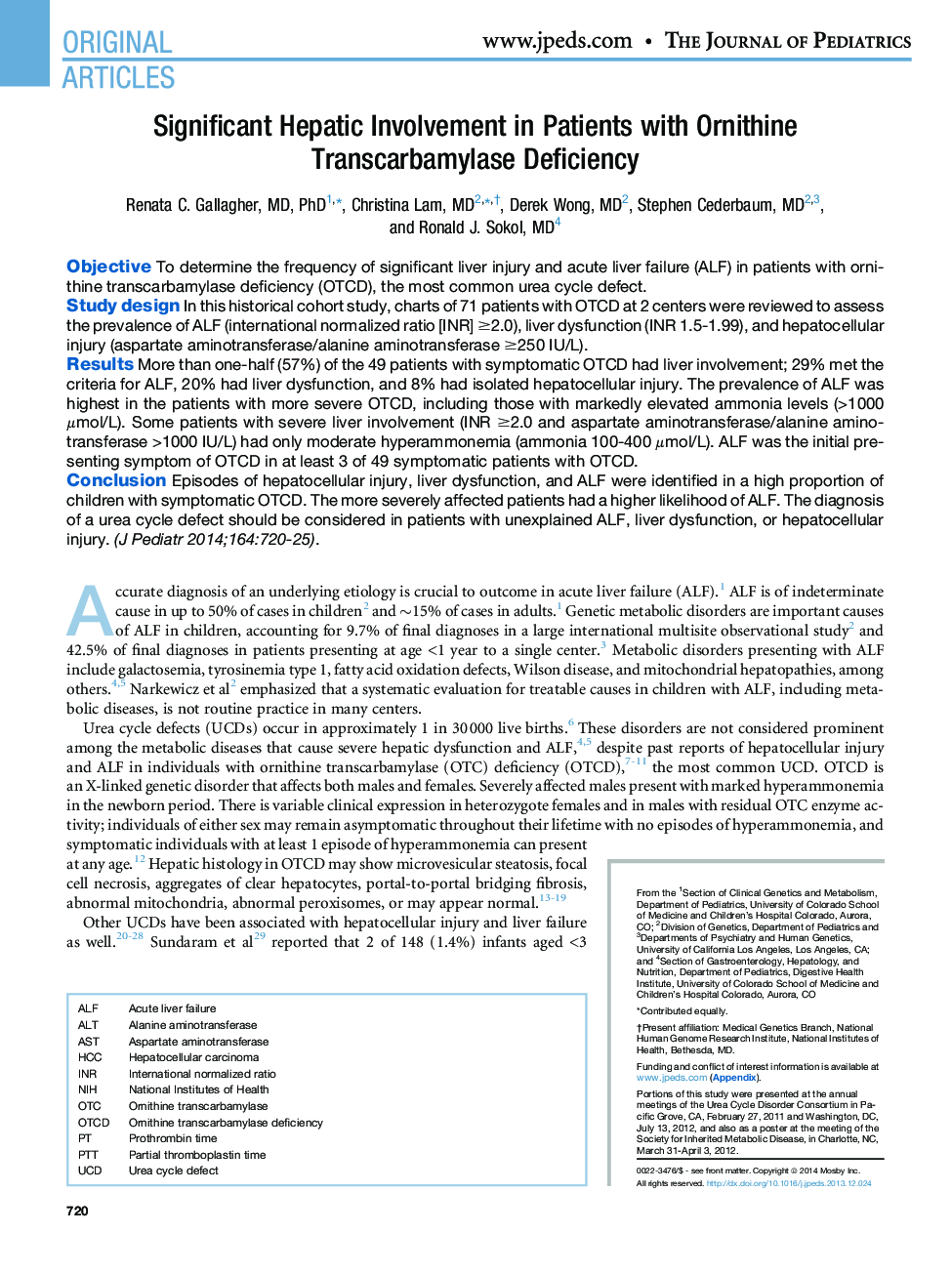| Article ID | Journal | Published Year | Pages | File Type |
|---|---|---|---|---|
| 6222472 | The Journal of Pediatrics | 2014 | 12 Pages |
ObjectiveTo determine the frequency of significant liver injury and acute liver failure (ALF) in patients with ornithine transcarbamylase deficiency (OTCD), the most common urea cycle defect.Study designIn this historical cohort study, charts of 71 patients with OTCD at 2 centers were reviewed to assess the prevalence of ALF (international normalized ratio [INR] â¥2.0), liver dysfunction (INR 1.5-1.99), and hepatocellular injury (aspartate aminotransferase/alanine aminotransferase â¥250 IU/L).ResultsMore than one-half (57%) of the 49 patients with symptomatic OTCD had liver involvement; 29% met the criteria for ALF, 20% had liver dysfunction, and 8% had isolated hepatocellular injury. The prevalence of ALF was highest in the patients with more severe OTCD, including those with markedly elevated ammonia levels (>1000 μmol/L). Some patients with severe liver involvement (INR â¥2.0 and aspartate aminotransferase/alanine aminotransferase >1000 IU/L) had only moderate hyperammonemia (ammonia 100-400 μmol/L). ALF was the initial presenting symptom of OTCD in at least 3 of 49 symptomatic patients with OTCD.ConclusionEpisodes of hepatocellular injury, liver dysfunction, and ALF were identified in a high proportion of children with symptomatic OTCD. The more severely affected patients had a higher likelihood of ALF. The diagnosis of a urea cycle defect should be considered in patients with unexplained ALF, liver dysfunction, or hepatocellular injury.
